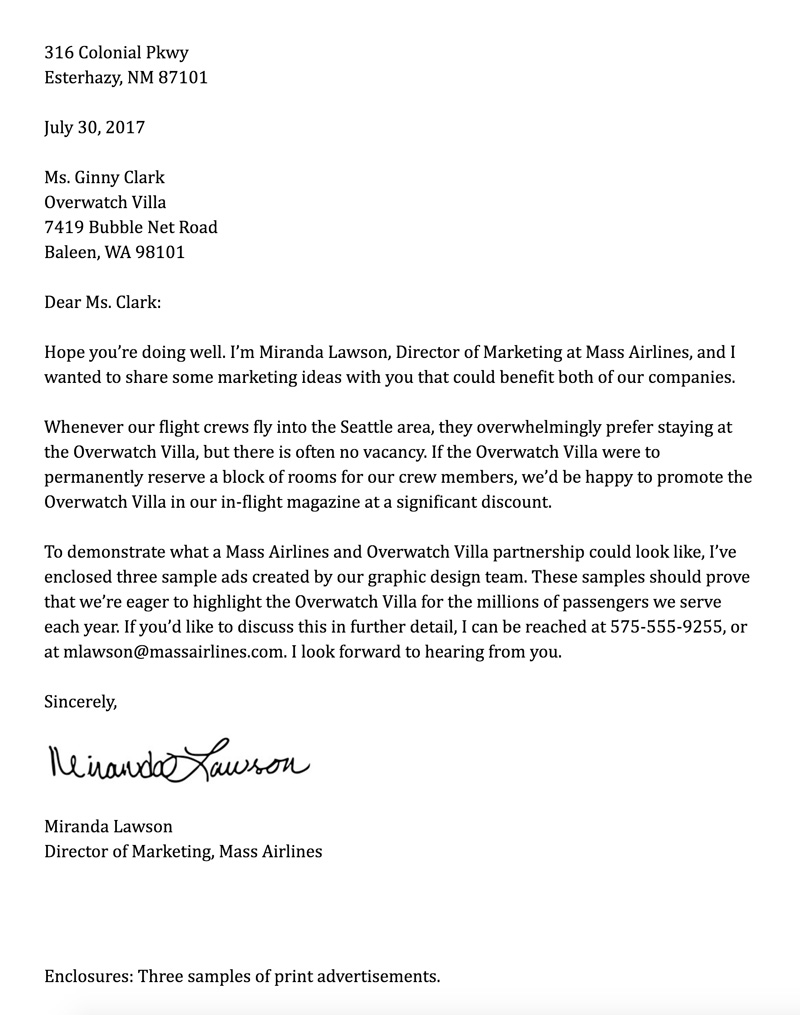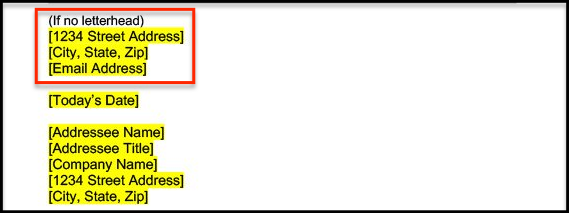BUSINESS LETTER
A business letter
is a formal document often sent from one company to another or from a company
to its clients, employees, and stakeholders, for example. Business letters are
used for professional correspondence between individuals, as well. Althought email
has taken over as the most common form of correspondence, printed out business
letters are still used for many important, serious type of correspondence,
including reference letters, employment verification, job offers, and more.

Example of business letter when using a
letterhead:
XavierLau
123 Business Rd., Business City, NY 54321 · 555-555-5555
· xavier.lau@gmail.com
September 1, 2018
Portia
Lee
Owner
Acme
Travel
321
Metropolis Ave.
Dear Ms. Lee:
I’m writing to you today on behalf of Happyland
Helpers. We’re a small organization that helps low-income families who need
after-school care for their young children. We offer grants to families and
free transportation for their children so that they can attend one of the local
after-school daycare centers.
Every year, we hold a fundraising event: the
Happyland Carnival at Floyd Rosedale Middle School. I’m hoping you may be
interested in donating to our silent auction and raffle.
We’re looking for items such as gift baskets,
housewares, toys and other useful items. Cash donations are also appreciated if
you prefer. This year, all proceeds will go towards buying the new van that we
need to transport the children.
If you’re interested in making a donation, please
let me know by email xavier.lau@gmail.com, or by cell phone (555-555-5555) if
you have any questions.
Sincerely,
Xavier Lau
Part 1 LetterHead
(A). Letterhead – Formal Letter Format
Most professional
business letters include a letterhead which is comprised of your name, address,
city,
zip, phone number, and email address.
Letterheads are meant to make your
letter unique, as well as help
verify its authenticity to the recipient. Likewise, you can include your
company’s logo on the letterhead for brand recognition and a more trustworthy
appearance. See the letterhead sample:
(B). No Letterhead – Formal Letter
Format
Using a letterhead is
always preferable when writing a business letter. However, if you decide to not
use one, you must use the following format to maintain a professional
appearance:
Ø Write your contact information on
the top left of the page, just above the date.
Ø Do NOT include your name in this section — when selecting this style, it simply looks better
to sign off with your name at the end of the letter.
Ø Only include your street
address, city, state, and zip code.
Example of format when not using a letterhead:

Part 2. Date
The date should be the day on which you completed the letter, written in
standard U.S. format (eg. October 28, 2017). It should be written underneath
the letterhead, or underneath the address on the top left of the page. The date is a critical
piece of information documenting when the correspondence was sent. This is
important for correspondence that may be kept for future reference.
Part 3. Addressee – How to Address a
Letter in 4 Steps
Write the recipient’s (or “addressee’s”) address on the top left side
underneath the date. Begin with the name of the addressee on the first line.
Some research may be necessary to find the name (LinkedIn, the company’s
website, even Google search are all great tools).
Ø
Step 1: Address them properly as Ms., Mrs., or Mr. Also, make sure to include their title — such as Dr. — if it applies.
Ø
Step 2: Beneath their name, write their current title. If you are unsure what
their title is, do the necessary research to find out if possible. If they have
no title, leave it blank.
Ø
Step 3: Include the name of their company underneath their title.
Ø
Step 4: Write out their company’s street address, city, state, and zip code. If
they are located outside the United States, include the country name after the
city.
Part 4. Salutation
The salutation you will use depends on the title of your addressee, your
familiarity with them, and also the context of the letter. If you are familiar
with the addressee, then use their first name (unless they have specifically
asked you otherwise).
Ø
If the addressee has earned a Ph.D. or an MD, then refer to them as Dr. (or Professor).
Ø
Military titles such as General,
Colonel, Major, etc., should be honored as such.
Ø
If you do not know the contact person or
you are addressing a group, use an appropriate salutation such as Sir or Madam, Hiring Manager, Director of Human Resources, Members of the [Name] Committee (hiring committee,
organizing committee, acceptance committee), Board of Directors.
When it comes to salutations, it is always better to err on the side of
caution and be polite as possible.
Part 5. Body
The body of the letter is located underneath the salutation, and is the
field where you get down to
business and discuss the reason you’re reaching out to this person.
Usually, the body includes several strategic paragraphs meant to inform,
persuade, and convey gratitude.
Ø
In the first paragraph, get to your point quickly and state it concisely in the first line. Do
not wait until the second paragraph to tell your audience what your main point
is – they most likely won’t get that far.
Ø
In the second paragraph, use evidence and persuasive reasoning to justify your main point. If
needed, use an extra paragraph to further support your point via empirical
evidence.
Ø
The closing paragraph should restate the point of the letter, and most importantly,
include a call to action. A
call to action is a passage that compels your reader to do something. Ask yourself, “what do I want my reader to do right after
reading this letter?”
Examples of calls to action:
Ø
“Please
call me at [phone #] or email me at [email address] at your earliest
convenience.”
Ø
“Please
get in touch with me at your earliest convenience to schedule a meeting.”
Ø
“Please
let me know how I may be of assistance during this period.”
Part 6. Closing / Complimentary close
You should always close with a positive sign-off, such as “Thank you,”
“Yours truly ,” “Sincerely,”
or “Respectfully.” Remember to only capitalize the first word of this
closing line. A comma
should follow the closing.and to leave four
lines of space between the closing line and your typed name to make room for
your signature.
Part 7. Signature Line
Skip four lines after the closing and type your
name. This customarily includes a middle
initial, but does not have to. Women may indicate how they wish to be addressed
by placing Miss, Mrs., Ms. or similar
title in parentheses before their name.
Part 8. Enclosure
An enclosure note is an often neglected aspect of letter writing in the
digital era. In fact, not many people actually know what ‘enclosure’
means. When you write “enclosure” in any letter you’re implying that another document is attached to the file.
source :
Tidak ada komentar:
Posting Komentar